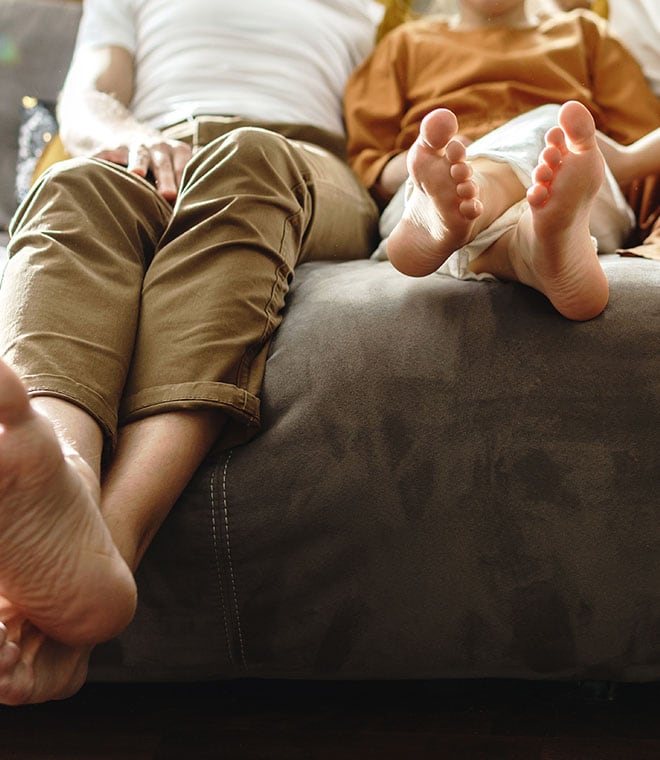Health
What is moccasin athlete's foot?
By Kathleen Coggshall, MD Sep 20, 2024 • 6 min
Athlete's foot is a common infection that affects a significant number of people worldwide. It typically causes an itchy, scaly rash that affects one or both feet. The distinguishing feature of moccasin athlete's foot is its distribution on the bottom and sides of the foot, similar to the shape of a moccasin.
Tinea pedis
Moccasin athlete's foot is a fungal infection, otherwise known as dermatophytosis. Tinea pedis specifically refers to fungal infections of the skin on the feet. In Latin, pedis means foot, and tinea is a type of dermatophyte or fungus, also known as ringworm. Dermatophytes survive on keratin, the protein that gives skin its structure. In fact, dermatophytes don't tend to penetrate deeper than the topmost layer of skin. They tend to occur in the superficial layers of hair, nails and dead skin cells.
There are many different species of fungus worldwide that can cause these fungal foot infections. Trichophyton rubrum is the most common offender when it comes to athlete's foot, and more specifically the moccasin type. T. rubrum is also a big culprit in chronic athlete's foot infections since this species can suppress the body's immune response to infection.
Types of athlete's foot
There are four forms of athlete's foot:
- chronic hyperkeratotic (moccasin-type infection)
- chronic intertriginous (toe web infection)
- acute ulcerative (open sores or ulcers)
- vesiculobullous (vesicular or blister-type infection).
The most common is chronic intertriginous (interdigital athlete’s foot), where the infection occurs between the toes. The fourth and fifth toes are most often affected. Interdigital athlete's foot can manifest as peeling skin, fissures and rash. The warm, moist environment between the toes helps fungal organisms thrive.
Even more so than the other types, interdigital athlete's foot tends to be intensely itchy. Topical antifungal creams, such as terbinafine or clotrimazole, can be an effective treatment, but it often takes several weeks of therapy to see results.
Vesiculobullous athlete's foot refers to the vesicles, or blisters, that can develop on the bottoms and sides of the feet. This type of athlete's foot is less common than other forms of athlete’s foot.
Moccasin athlete's foot tends to be more stubborn to treat than the others. In some cases, this type of skin infection can become chronic, which means the standard antifungal creams won't work. However, oral prescription treatments, such as terbinafine, are often effective in clearing the infection.
Athlete's foot prevention and treatment
Dermatophytes, the organisms that cause moccasin athlete's foot, as well as other types, thrive on sweaty feet. For this reason, keeping feet clean and dry can help ward off infection. Since these fungal organisms live on surfaces, wearing shoes at pools and other public places can lessen your chances of developing an infection. Other strategies for reducing your risk for moccasin athlete's foot include washing feet with soap, changing shoes and socks frequently and wearing moisture-wicking socks.
Moccasin athlete’s foot can be uncomfortable and sometimes difficult to get rid of, but proper treatment can alleviate symptoms and clear the infection. See your healthcare provider if you’re experiencing severe, painful symptoms of moccasin athlete’s foot or if the infection doesn’t improve or gets worse after using an over-the-counter athlete’s foot treatment as directed.
Updated by Julie McDaniel, MSN, RN, CRNI, September 2024.
Sources:
- https://www.aafp.org/afp/2003/0101/p101.html
- https://www.cdc.gov/ringworm/about/index.html
- https://journals.asm.org/doi/epdf/10.1128/CMR.8.2.240
- https://www.cdc.gov/ringworm/hcp/clinical-overview/
- https://doi.org/10.1186/1476-7961-2-5
- https://www.uptodate.com/contents/dermatophyte-tinea-infections
- https://www.aad.org/public/diseases/a-z/athletes-foot-prevent
- https://www.mdpi.com/2309-608X/1/2/130
- https://www.ncbi.nlm.nih.gov/books/NBK470421/
- https://www.ncbi.nlm.nih.gov/books/NBK544360/
- https://www.merckmanuals.com/professional/dermatologic-disorders/fungal-skin-infections/tinea-pedis-athlete-s-foot
- https://www.ncbi.nlm.nih.gov/pmc/articles/PMC5753105/
- https://my.clevelandclinic.org/health/diseases/22139-athletes-foot-tinea-pedis



